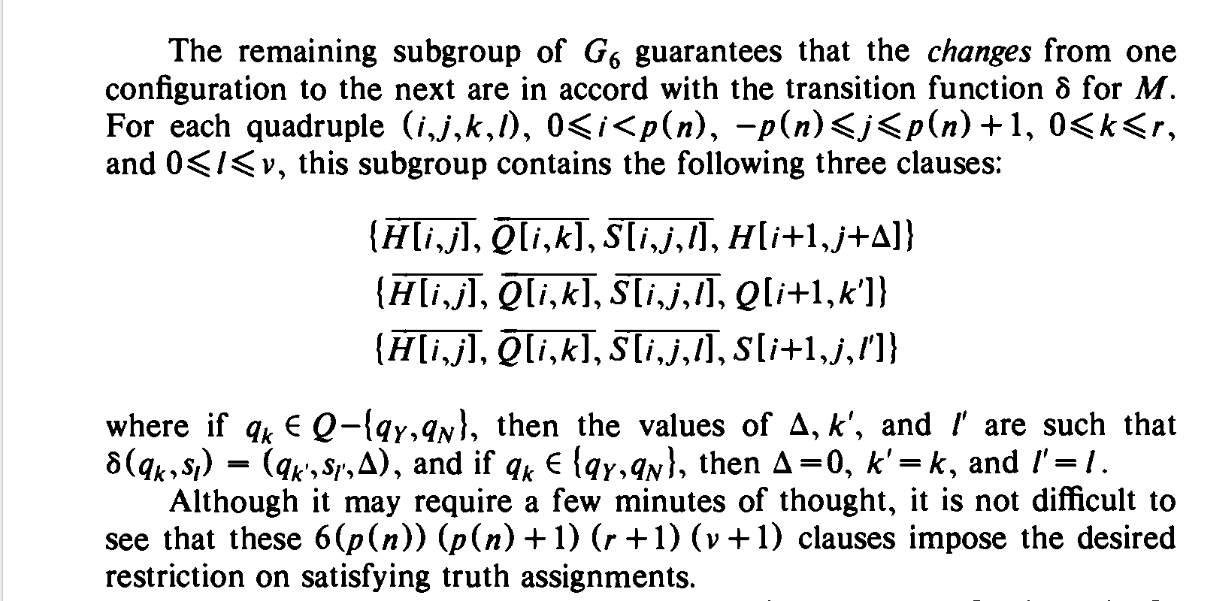I am looking at the proof of the Cook-Levin theorem in Computers and Intractability: A Guide to the Theory of NP-Completeness. In particular, I find one thing unclear. He constructs the statement that is satisfied if and only if transition from step $i$ to step $i+1$ is correct. It goes as follows:
So essentially these statements say that when we are in state $q_k$ at time $i$ and the head is on the square $j$ and reads from it symbol $s_l$, then in the time $i+1$ our head will be at the square $j+\Delta$, we will be in state $k'$ and we will write $s_{l'}$ to the previous square. But I am worried since at no point we check what happens to the rest of the squares, namely if for example we had $ID_i$ to be $0000q_0000$ and $ID_{i+1}$ to be $11111q_511$, shouldn't all the conditions above be satisfied, however this isn't a valid transition?

